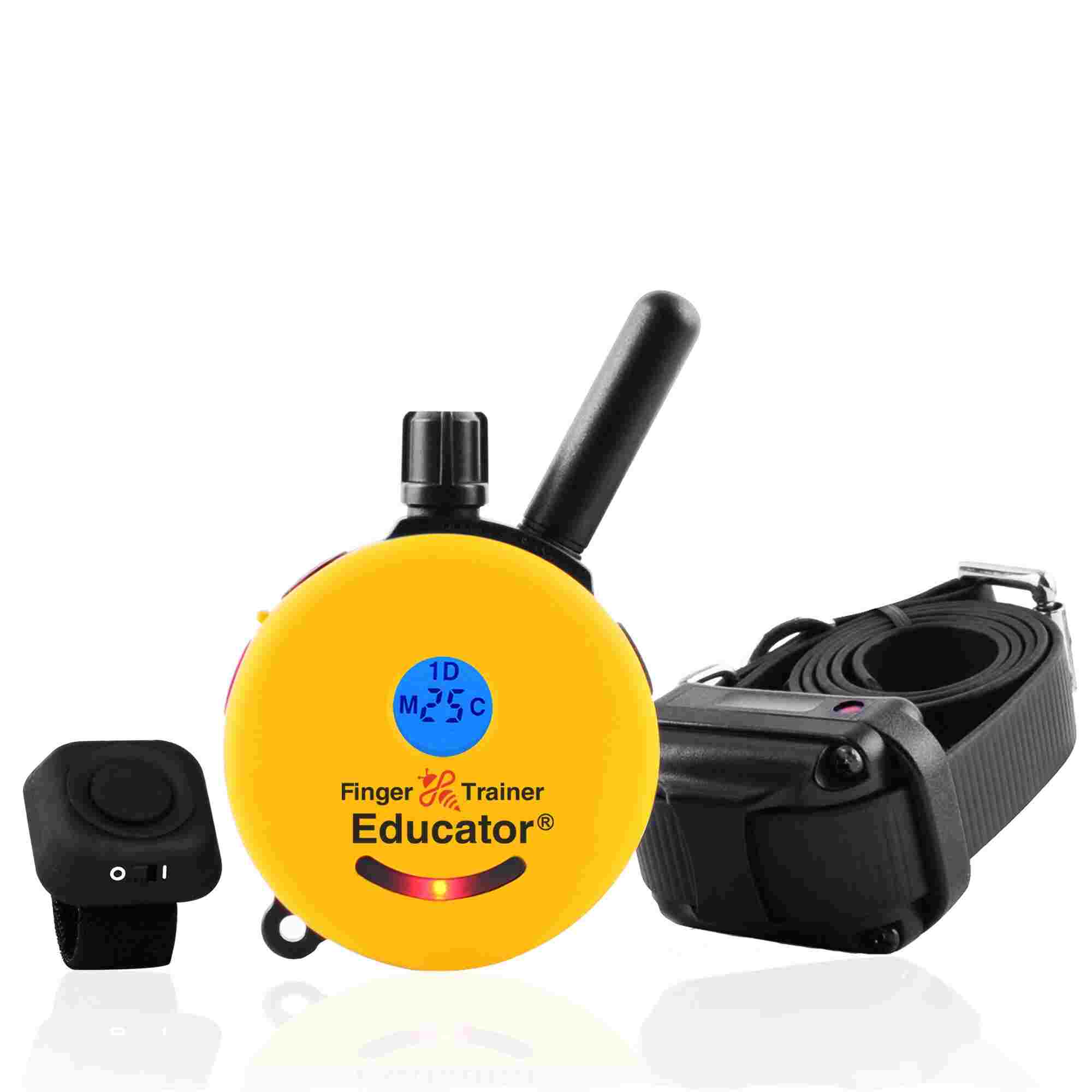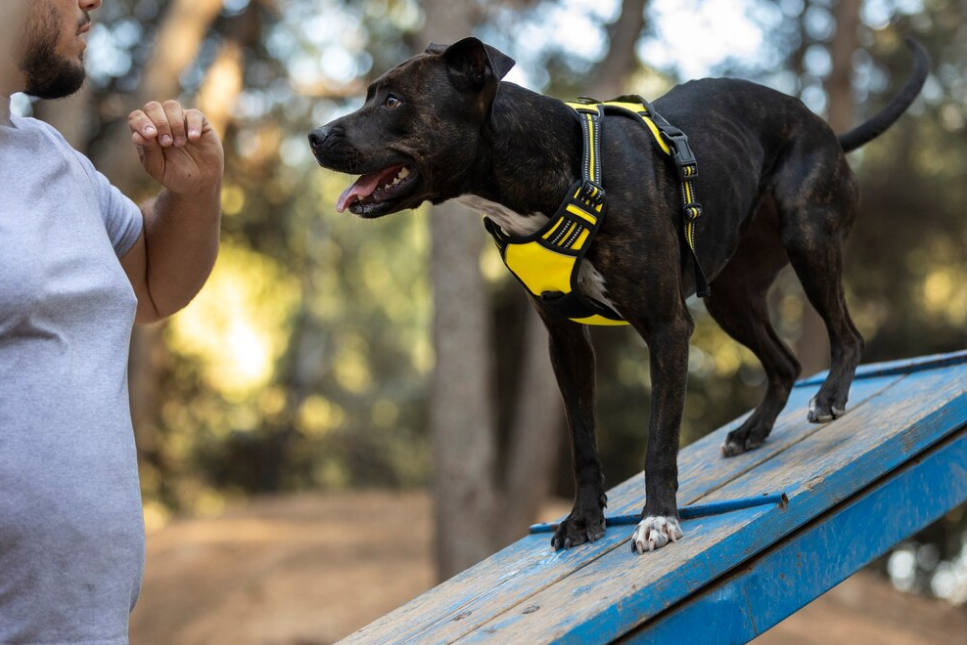Training your dog can be one of the most rewarding experiences for any pet owner. However, it can also be challenging if your dog has behavioral issues or lacks focus during training sessions. Enter the e-collar or remote collar — a modern solution designed to make training effective, humane, and pain-free. In this article, we’ll explore what an e-collar is, how it works, and why it’s an excellent choice for dog training.
What Is an E-Collar or Remote Collar?
An e-collar, also known as a remote collar, is a training tool designed to communicate with your dog from a distance. It consists of a collar with a small receiver and a remote control operated by the trainer. Unlike traditional training tools, e-collars use vibration, sound, or static stimulation to gain the dog’s attention without causing harm or pain.
How Does an E-Collar Work?
The e-collar’s primary function is to serve as a communication device between you and your dog. When your dog exhibits undesired behavior or ignores a command, you can press a button on the remote to deliver a signal. This signal can be a beep, vibration, or low-level static stimulation. The goal is not to punish the dog but to redirect their focus back to the desired behavior.
Many modern e-collars come with adjustable intensity levels, allowing you to tailor the signal strength to your dog’s temperament and sensitivity. This customization ensures that the training is effective and pain-free, promoting a positive training experience for both you and your dog.
Benefits of Using an E-Collar or Remote Collar for Pain-Free Dog Training
1. Effective Communication
One of the biggest challenges in dog training is getting your dog’s attention, especially in distracting environments. An e-collar provides a direct line of communication, making it easier to reinforce commands and correct unwanted behaviors.
2. Pain-Free Training
Contrary to common misconceptions, e-collars are not designed to harm your dog. When used correctly, the signals emitted by the collar are gentle and serve only to capture your dog’s attention. This makes e-collars a humane and pain-free option for training.
3. Versatility
E-collars are incredibly versatile and can be used to address a wide range of behavioral issues, including excessive barking, leash pulling, and aggression. They are also effective for teaching basic obedience commands like “sit,” “stay,” and “recall.”
4. Remote Training Capability
One of the standout features of an e-collar or remote collar is the ability to train your dog from a distance. This is particularly useful for off-leash training, ensuring that your dog remains responsive even when they are not by your side.
5. Builds Confidence in Your Dog
By providing clear and consistent feedback, e-collars help your dog understand what is expected of them. This clarity can boost their confidence and make them more eager to learn and obey commands.
Choosing the Right E-Collar for Your Dog
When selecting an e-collar or remote collar for pain-free dog training, it’s essential to consider the following factors:
1. Adjustable Intensity Levels
Look for a collar with multiple intensity settings. This allows you to find the right level of stimulation that works for your dog without causing discomfort.
2. Range
Consider the range of the e-collar. For basic obedience training, a range of 300-500 yards is sufficient. For advanced or off-leash training, opt for a collar with a longer range.
3. Modes of Operation
Many e-collars offer multiple modes, including sound, vibration, and static stimulation. Having these options ensures that you can customize the training experience to suit your dog’s needs.
4. Durability and Waterproof Design
If your dog loves outdoor activities, choose a durable and waterproof e-collar to withstand various weather conditions and environments.
5. Size and Comfort
Ensure that the collar fits your dog comfortably and is not too tight or too loose. Most e-collars are adjustable and designed to fit dogs of different sizes.
How to Use an E-Collar or Remote Collar Effectively
Using an e-collar correctly is crucial to ensuring a positive and pain-free training experience. Here are some tips to help you get started:
1. Introduce the Collar Gradually
Before using the e-collar, let your dog wear it for a few days without activating it. This helps them get accustomed to the collar and reduces any anxiety associated with wearing it.
2. Start with Low Intensity
Always start with the lowest intensity setting and gradually increase it only if necessary. The goal is to use the gentlest signal that gets your dog’s attention.
3. Pair the Collar with Positive Reinforcement
Combine the use of the e-collar with positive reinforcement techniques, such as treats, praise, or playtime. This helps your dog associate the collar’s signals with positive outcomes, making the training more effective.
4. Use the Collar Sparingly
The e-collar should be used as a training aid, not a crutch. Focus on teaching your dog the desired behaviors and gradually reduce the use of the collar as they become more responsive.
5. Avoid Overcorrection
Overusing the e-collar can lead to confusion and anxiety in your dog. Use it only when necessary and always follow up with clear commands and positive reinforcement.
Common Misconceptions About E-Collars
1. E-Collars Cause Pain
This is perhaps the most widespread myth about e-collars. When used correctly, the signals emitted by the collar are mild and non-painful. Many dog trainers and veterinarians endorse e-collars as a safe and humane training tool.
2. E-Collars Are Only for Aggressive Dogs
E-collars are suitable for dogs of all temperaments, not just those with behavioral issues. They are an effective tool for teaching basic obedience, enhancing focus, and improving recall.
3. E-Collars Replace Traditional Training
While e-collars are highly effective, they are not a substitute for traditional training methods. They should be used in conjunction with positive reinforcement techniques to achieve the best results.
Success Stories: E-Collar or Remote Collar for Pain-Free Dog Training
Many pet owners and professional trainers have achieved remarkable results using e-collars. For instance:
- Off-Leash Freedom: Sarah used an e-collar to train her Labrador Retriever to obey recall commands, giving her the confidence to let her dog roam off-leash in the park.
- Barking Control: Mark successfully curbed his Beagle’s excessive barking with the gentle vibration mode of an e-collar, improving the quality of life for both his family and neighbors.
- Enhanced Obedience: Emma trained her high-energy Border Collie to focus during agility training, resulting in improved performance and a stronger bond between them.
Conclusion
An e-collar or remote collar for pain-free dog training is a valuable tool that can make the training process more efficient and enjoyable for both you and your dog. By providing clear communication, addressing behavioral issues, and promoting positive outcomes, e-collars offer a humane and effective solution for dog training.
When used responsibly and in combination with positive reinforcement techniques, e-collars can transform the way you train your dog, building a stronger bond and ensuring a happier, well-behaved companion. If you’re considering an e-collar, remember to choose one that suits your dog’s needs and always follow best practices for pain-free and humane training.












